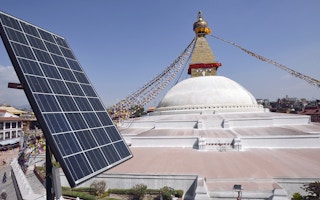With subsidy cuts, policy uncertainty and funding gaps characterising Europe’s clean energy landscape, interest in the Asian renewable energy market is growing. Increasing attention is being paid to solar. However, investors and constructors need to go in with their eyes open to the legal and regulatory pitfalls.
Recently released research from Bloomberg New Energy Finance highlighted that a staggering US$2.5 trillion will be invested in renewable generation technologies in Asia Pacific by 2030.
Many South East Asian countries have now set targets for the adoption of renewable energy. Indonesia and Thailand have set targets of 25 per cent by 2025 and 2021 respectively and Vietnam 5 per cent by 2020. Malaysia is targeting 11 per cent by 2020 while the Philippines aims to triple its renewable energy usage by 2030.
Unlike the European Union (EU), however, there is no organisation in South East Asia with authority to monitor compliance with targets and penalise failure. In the EU, enforcement action can result from non-compliance.
While all ASEAN countries are members of the Kyoto Protocol, there are no ramifications for developing countries if greenhouse gas emissions are not reduced.
Currently, the cost of generating solar power in the region is about twice that of fossil fuels. Without incentives or enforcement, solar struggles to compete with traditional forms of energy and there is a risk that targets will remain just that.
Solar incentives typically take the form of feed in tariffs (FiT), which offer small-scale producers of clean energy a fixed price for generating electricity and selling it to the grid. Other incentives include solar panel subsidies, tax breaks, soft loans and preferential access to electricity grids.
Japan has been successful in encouraging solar energy, introducing a FiT scheme in 2009. The solar market in Japan has attracted major global investors, including Goldman Sachs, which plans to invest almost half a billion US dollars in Japanese renewable projects over the next five years.
Thailand and Malaysia have had solar FiT schemes in place for some time. Indonesia and the Philippines recently adopted them.
“
Currently, the cost of generating solar power in the region is about twice that of fossil fuels. Without incentives or enforcement, solar struggles to compete with traditional forms of energy and there is a risk that targets will remain just that.
In parallel, the price of solar panels has decreased substantially in recent years largely due to the mass production of subsidised panels in China and advances in technology.
Cheap panels and attractive tariffs can paradoxically create difficulties. A flooded UK market for solar panels prompted the government to retrospectively lower the FiT rate, resulting in litigation and a finding against it. In the EU, one of the responses has been to increase import tariffs on Chinese solar panels, resulting in trade tensions with China.
Malaysia’s approach to falling solar panel prices has been to include a “degression rate” in its FiT regime, which refers to a gradual decrease in the tariff paid for the power as the cost of producing it reduces. FiT applicants are required to enter into 21-year power purchase agreements (PPAs) with power distributors.
However in Germany, where a similar scheme is in place, the latest degression rates have been described as “so severe” that it could impact the market’s viability. While this seems less likely in Malaysia, it is a factor potential investors need to consider.
Malaysia also sets a quota to control the amount of renewable energy in the market. Its FiT scheme is funded by a Renewable Energy Fund supported by a 1.6 per cent levy on electricity consumers that use over 300 kilowatt hours (kWh) per month. Without a quota in place, gaps in funding can occur.
In the Philippines, a FiT scheme was only adopted in 2012. However, a solar park is already under construction at San Carlos City on the island of Negros Occidental that will benefit from an exemption from customs duties and taxes on imports, and a seven-year tax exemption on profits. Like Malaysia, there is a quota on the number of projects that can benefit from the FiT scheme.
Most countries also have limits on the capacity size of solar projects eligible for FiTs. Projects in Malaysia cannot exceed 30 megawatts (MW) without special approval. Indonesia’s quota is 140MW for 80 locations. In contrast, Thailand’s original subsidy scheme encouraged large-scale solar and almost all projects are above 1MW.
Thailand’s attractive subsidy rates, introduced in 2006, led to a “solar gold rush” in 2008. However, the level of uptake in the permits far exceeded the amount of completed projects. The Government reacted by introducing measures to encourage project completion which some players said were confusing and lacked transparency.
Construction delays in these types of projects can be caused by factors outside a contractor’s control, including grid connection and certification. In Malaysia, the FiT rate is linked to the completion date. In Indonesia, penalties are imposed for late completion. These factors need to be considered when negotiating PPAs and construction contracts.
A robust renewable energy industry seems high on the agenda of most Asian countries and solar’s role will grow. But potential players need to make sure they’re not blinded to the risks by the sunny outlook.
Glen Warwick is a partner in Clyde & Co’s Global Projects and Construction group.


















